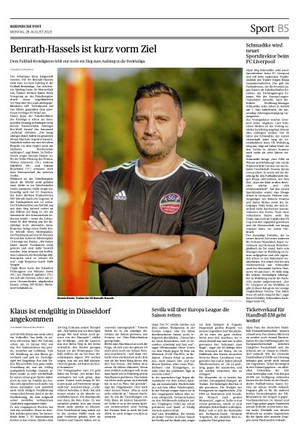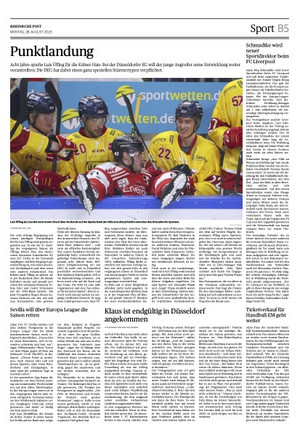Automated Newspaper Layouting
What is this project about?
In this project, we are developing a system that automatically generates fully layouted pages of newspapers.
The system takes a set of articles as an input and delivers aesthetically pleasing newspaper pages as an output.
Motivation
The continuous decline in subscriptions for printed newspapers and their electronic versions presents a significant challenge for newspaper publishers, who rely heavily on these revenues for their financial sustainability. This downward trend is exacerbated by the rapid digitalization of the media landscape, where traditional publishers are not only competing with each other but also with a burgeoning number of independent content creators across various digital platforms. To remain viable and competitive, publishers must explore cost-reduction strategies while simultaneously striving to retain existing subscribers and attract new ones.
One critical factor in achieving these objectives is the design of the newspaper layout. The layout plays an essential role in the initial engagement of readers by influencing the readability and visual appeal of the publication. A well-designed layout can serve as a gateway, enticing readers to delve deeper into the content. However, the traditional process of layout generation is highly complex and predominantly manual, involving significant human labor and associated costs.
There is a pressing need for innovation in this area. Automating the layout generation process can drastically reduce operational costs and enhance efficiency. Moreover, by adopting advanced layout algorithms, publishers can personalize layouts to cater to the preferences of individual readers, thereby increasing reader engagement and satisfaction. Such personalization is pivotal in an era where consumer expectations are heavily influenced by customized digital experiences.
Furthermore, automation and personalization in layout design are not just cost-cutting measures but also strategic investments in improving the quality of reader interaction with the newspaper. By ensuring that layouts are both aesthetically pleasing and reader-friendly, publishers can significantly boost the perceived value of their publications. This, in turn, supports the retention of existing subscribers and the acquisition of new ones, securing a more stable revenue stream in a highly competitive market.
Status quo
So far we developed an automated layout system that can automatically generate layouts for single pages for all basic elements such as text, images, info boxes etc.. We manually gathered data and created a set of layouts that can be used for evaluation. The entire process consists of the following steps:
- article superset creation based on article-inherent variables, such as image size, article column width, etc.
- optimization based on machine learning methods that rely on the operationalization of aesthetic measures
- visualization of created articles (PDFs by rendering the optimal solutions) using an interactive, web-based UI that allows for articles repositioning. If articles are repositioned, we return to step (2)
- export final PDF to In-Design
We set the focus on the design and implementation of the artifact, which provides a good fit to the design science research (DSR) framework.
The current state is presented in a short video.

